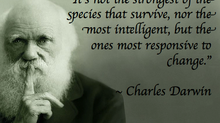Role of mutations in evolutions
- ruby
- 2016년 1월 3일
- 1분 분량

A mutation is a change in DNA, which affects how it looks, how it behaves, and its physiology. So a change in an organism's DNA can bring changes in most aspects of its life. If the mutation alters the DNA in a gamete, however, the mutation may be passed on to succeeding generations as a new allele. For example, if the kittens have mutations in their egg or sperm cells, these mutations could be passed on to their offspring. These mutations were not present in their parents' DNA. Thus, mutations are the raw material of genetic variation.
Typical mutation rate is 1 in a million per generation
- DNA fails to copy accurately - Exposure to chemicals or radiation


Mutation provides new alleles in a species and are the only source of new genetic variation when inherited. It happens in the DNA of any living organism. When there is a mutation in the DNA, a cell may have new characteristics: the cell could die or multiply more than it should, resulting in a cluster of cells that form a tumour.
Do mutations can provide a selective advantage?
Mutation may become favourable in a changing environment regardless of advantage or disadvantage. Over time, a selective advantage helps an organism survive the changing environmental conditions and reproduce. For instance, some populations of Daphnia have a mutation that allows them to survive at higher-than-normal water temperatures.





















Comments